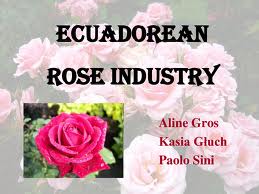First introduced to Ecuador in the 1950s, industry makes up about 36 percent of the GDP and absorbs 25 percent of the total labor force (1 million workers). The chief industrial exports are petroleum and farmed shrimp, but mining of metals is emerging as a lucrative industry. Industry is a volatile component of the economy because Ecuador's industrial sector is oriented toward primary commodities. These command erratic prices on the international market when compared to the more stable demand for manufactured and value-added goods. The precarious structure of Ecuador's industrial sector was revealed in 1998 when oil prices dropped and South American shrimp were struck by the deadly Mancha Blanca virus. This double stroke of bad luck, afflicting Ecuador's 2 most important industrial products, led to a shrinking economy in 1999 that aggravated Ecuador's economic woes.
PETROLEUM. Oil is Ecuador's top export, its revenue makes up 10 percent of the GDP. A member of OPEC (Oil and Petroleum Exporting Countries) since the 1970s, Ecuador exports 60 percent of the oil it produces, most of which originates in the Amazon basin. Until recently, the government granted large price subsidies on domestic oil, driving down the price of gasoline for individuals and facilitating inexpensive fares on public transport. In 2000 as part of the nation's new economic reforms, these subsidies were gradually removed, and oil prices were set to international levels, making gasoline unaffordable for many Ecuadorians. Untapped oil reserves belong to the government by authority of the constitution, which decrees all subsurface resources to be the property of the state

